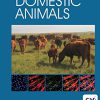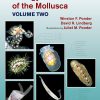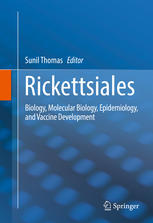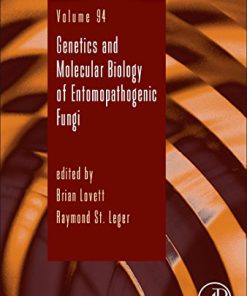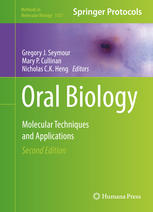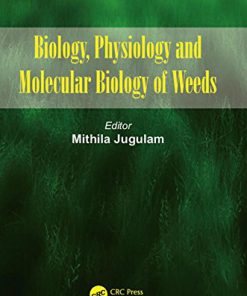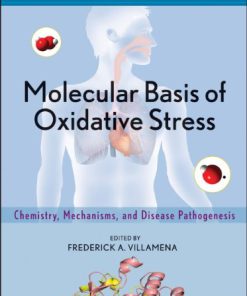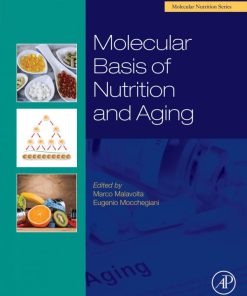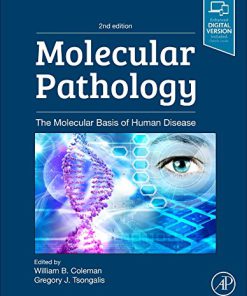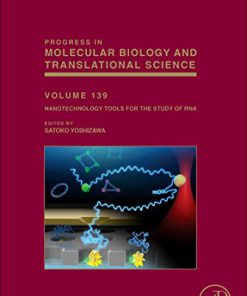Histophilus somni Biology Molecular Basis of Pathogenesis and Host Immunity 1st Edition by Thomas Inzana 3319295565 9783319295565
$50.00 Original price was: $50.00.$25.00Current price is: $25.00.
Histophilus somni Biology Molecular Basis of Pathogenesis and Host Immunity 1st Edition by Thomas J. Inzana – Ebook PDF Instant Download/DeliveryISBN: 3319295565, 9783319295565
Full download Histophilus somni Biology Molecular Basis of Pathogenesis and Host Immunity 1st Edition after payment.
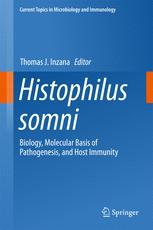
Product details:
ISBN-10 : 3319295565
ISBN-13 : 9783319295565
Author: Thomas J. Inzana
This volume reviews the current understanding of the taxonomy, disease syndromes, genetics, biology, and pathogenic factors of Histophilus somni, as well as the host immune response to this pathogen. H. somni is one of the most important bacterial pathogens in cattle and other ruminants, and its virulence factors are highly conserved with Haemophilus influenzae and other members of the Pasteurellaceae. H. somni has been recognized as a major cause of thrombotic meningoencephalitis, respiratory disease syndromes, myocarditis, reproductive disease syndromes, polyarthritis, mastitis, ocular disease, and septicemia. The only known habitats of H. somni are the mucosal surfaces of ruminants, making this bacterium an opportunistic pathogen. Although it is capable of causing inflammation at systemic sites and is toxic to epithelial and phagocytic cells, the bacterium’s wide array of virulence factors act primarily as a defense against, or to escape recognition from, host innate and adaptive immunity.
Histophilus somni Biology Molecular Basis of Pathogenesis and Host Immunity 1st Table of contents:
5007 Taxonomy of Histophilus somni
Abstract
1 Historical Background
2 Detection and Identification
3 Phenotypic Characterization
4 Subtyping of Histophilus somni
5 Phylogenetic Investigations
6 Whole-Genome Sequencing
7 Conclusions
References
5008 Histophilosis as a Natural Disease
Abstract
1 Introduction
2 Clinical Diseases
2.1 Cattle
2.1.1 Histophilus somni Disease Complex (HSDC) and Respiratory Disease
2.1.2 Central Nervous System Disease
2.1.3 Myocarditis and Sudden Death
2.1.4 Other Manifestations of HSDC
2.1.5 Reproductive Tract Infection, Accessory Sex Glands, and Disease
2.1.6 Treatment and Control
2.2 Small Domestic Ruminants
2.3 Bighorn Sheep
2.4 Bison
3 Pathology
3.1 Cattle
3.1.1 Respiratory Disease in Cattle
3.1.2 CNS Disease in Cattle
3.1.3 Myocardial and Vascular Disease in Cattle
3.1.4 Other Tissue Lesions in Cattle
3.2 Small Ruminants
3.3 Bighorn Sheep
3.4 Bison
4 Laboratory Diagnosis and Antimicrobial Resistance Testing
5 Summary
Acknowledgements
References
5009 Histophilus somni Genomics and Genetics
Abstract
1 Introduction to Genomic Analyses
2 Comparative Genomics
3 Comparative Transcriptomics
4 Plasmids and Shuttle Vectors
5 Mutagenesis
6 Natural Transformation
7 Conclusions
References
5010 Interactions of Histophilus somni with Host Cells
Abstract
1 Introduction
2 Interactions with the Innate Immune System
3 Interactions with the Vasculature
4 Thrombus Formation
5 Role of Neutrophil Extracellular Traps (NETs) in Thrombus Formation
6 Vascular Permeability and Vessel Transmigration
7 Summary
References
5011 Histophilus somni Surface Proteins
Abstract
1 Introduction
2 Outer Membrane Proteins (OMPs)
2.1 Major Outer Membrane Protein (MOMP)
2.2 OMPs Involved in Iron Acquisition
2.3 Other OMPs
3 Immunoglobulin-Binding Proteins (IgBPs or IbpA)
4 Conclusions
References
5012 Host Immune Response to Histophilus somni
Abstract
1 Introduction
2 Antibody Responses to H. somni
2.1 Protection by Passive Antibody Treatment
2.2 Role of Immunoglobulin Isotypes and Allotypes in H. somni Immunity
2.3 Specificity of Antibody Responses to H. somni and Protection
2.4 Immunodiagnosis
3 Evasion of Immune Responses
3.1 Interference with Phagocyte Function
3.2 Decoys or Antigen–Antibody Interactions Away from the Bacterial Surface
3.3 Lack of Immune Stimulation and Reactivity
3.4 Antigenic Conservation and Variation
4 Role of Microbial Interactions in Immunity to H. somni Infection
4.1 Shifting Immunoglobulin Class and Subclass Responses
4.2 Innate Immunity
5 Conclusions
References
5020 The Many Facets of Lipooligosaccharide as a Virulence Factor for Histophilus somni
Abstract
1 Introduction
2 Histophilus somni Lipooligosaccharide Purification, Structure, and Biological Activity
2.1 Lipid A
2.2 Core Oligosaccharide Structures and Antigenic Mimicry
3 Histophilus somni Lipooligosaccharide Phase Variation and Phase Variable Components
3.1 Evasion of Host Defenses by LOS Antigenic Phase Variation
3.2 Molecular Basis of LOS Phase Variation
3.3 Role of Phosphorylcholine on LOS
4 Histophilus somni Lipooligosaccharide Sialylation
4.1 Sialic Acid Metabolism and Decoration of the H. somni Surface with Sialic Acid
4.2 Adaptation of Sialyltransferases to Phase Variation
4.3 Effect of Lipooligosaccharide Sialylation on Resistance to Host Defenses
5 Summary
References
5013 Exopolysaccharide Production and Biofilm Formation by Histophilus somni
Abstract
1 Histophilus somni Biofilm Formation and Its Relevance During Infection
1.1 An Introduction to Biofilm Formation
1.2 Polymicrobial Relationships Within Biofilm
1.3 Biofilm Formation During Respiratory Infection and Septicemia
2 Differences in Biofilm Structure Between Pathogenic and Commensal Isolates
2.1 Methods of Studying Biofilm Formation Reviewed
2.2 The H. somni Biofilm Life Cycle
2.3 Comparison of Biofilm Formation Between Strains 2336 and 129Pt
2.4 Gene Products Essential for Biofilm Formation
3 Histophilus somni Exopolysaccharide Identification and Production
3.1 H. somni Exopolysaccharide Production
3.2 Genes Responsible for Exopolysaccharide Formation
3.3 Sialylation of the Exopolysaccharide
3.4 Diagnostic Application of the Exopolysaccharide
4 Concluding Summary
People also search for Histophilus somni Biology Molecular Basis of Pathogenesis and Host Immunity 1st:
histophilus somni in cattle
histophilus somni cow
histophilus somni
histophilus somni in calves
histophilus somni cattle
Tags: Histophilus somni, Biology Molecular, Pathogenesis, Host Immunity, Thomas Inzana
You may also like…
Biology and other natural sciences - Microbiology
Science (General)
Medicine - Immunology
Biology and other natural sciences - Biology
Oral Biology Molecular Techniques and Applications 2nd Edition Gregory 9781493966851
Biology and other natural sciences - Plants: Agriculture and Forestry
Biology physiology and molecular biology of weeds 1st Edition Mithila Jugulam
Biology and other natural sciences
Science (General)


